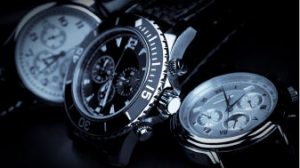Counterfeiting and piracy cost the global economy around $4.2 trillion a year. This negatively impacts economies, brands and individuals. Fake products threaten businesses, and they can be dangerous for consumers.
The Economic Cost of Piracy
The International Chamber of Commerce (ICC) and International Trademark Association (INTA) published a joint report into counterfeiting and piracy in 2017. It estimated that by 2022 the global trade in fraudulent products would be worth $2.3 trillion. In addition, displaced economic activity, investment, public fiscal losses and expenditure on criminal enforcement would cost economies an extra $1.9 trillion.
假冒和盗版威胁着合法的工作。该报告估计540万合法就业机会在各种各样的行业方面处于危险之中。欧盟(欧盟)估计8400万人占所有欧盟工作的38.9%,依靠知识产权保护(IPR)。总的来说,他们占GDP总量的45%。如果IPR在全球范围内不受保护,则这些人的生计和全世界数百万的人都会受到风险。
The Domestic Cost Of Piracy
消费者可能认为IPR对他们不重要;这不会影响它们。这种态度很短暂。
A 2019 study found most fake goods were consumer products. The Organization for Economic Co-operation and Development (OECD) believes fake goods now make up 3.3 percent of world trade, and that figure is rising. Footwear is the most heavily bootlegged industry (22 percent), followed by clothing (16 percent), leather goods (13 percent) and electrical equipment (12 percent).
Counterfeit products are substandard. Legitimate manufacturers ensure products conform to market requirements on safety and performance. Counterfeiters do not. They are trading on a legitimate name but without the proper testing regimes and quality management systems in place to ensure products are safe and secure.
This is of particular concern when the product may cause harm to buildings or consumers. Examples include electrical products with substandard wiring that can give an electric shock or start fires and fake toys and jewelry that could contain harmful substances.
另一个更令人担忧的趋势是假冒药物的兴起。伪造者工作得很快,它们非常迅速找到劫持Covid-19疫苗卷展览的方法。在一些国家,已发现非官方的支付服务服务,以管理假血清。在墨西哥,80人为假冒疫苗支付了1000美元,在波兰,发现尚未达到市场的非法刺戳含有抗皱治疗。
Where there is demand but a limited supply, there will always be an opportunity for criminals to introduce a counterfeit and substandard product.
Fighting Illicit Trade
To protect their IPR, legitimate brands spend a considerable percentage of their turnover every year on fighting illicit trade (FIT). Fraudulent products decrease their sales and, because they can potentially hurt the consumer, they can also damage their brand.
Companies have traditionally relied on retaining specialist lawyers in territories where they think they need to protect their IPR. This approach is expensive and isn’t always effective because it largely relies on reaction rather than proactive effort.
一种更有效的方法是使用申请行动(AFA)和理解备忘录(MOU)。这些文件允许品牌在特定国家宣布他们的知识产权。它涉及当地海关和执法机构(LEA)的义务在伪造的情况下执行其知识产权。
AFA and MOU are made in targeted countries. They are then supported by a global surveillance network utilizing AI (Artificial Intelligence) analytics, on-the-ground inspectors, and specialist training for LEA officers in new suspicious shipment profiling techniques. This new approach reduces costs, improves flexibility and optimizes brand protection.
SGS FIT IPR
SGS FIT IPR utilizes AFA and MOU to create an efficient protection strategy that builds on insights into fraudulent activity gained via AI analytics. The FIT IPR+ Platform allows rights holders to operate in real-time, integrating AFA/MOU and transmitting updates to relevant authorities.
这种全面的知识产权保护解决方案让权利持有人保持对他们的AFA / MOU的控制,同时让他们访问高级数据分析。此外,SGS的在地面专家将作为权利持有人和局部执法权之间的中介,收集样本,检查可疑货物,并提供有关真实性的决定。
For brands, the advantages are:
- Optimized IPR protection strategy targeting the right countries;
- 对新威胁的更大的灵活性;
- Lower costs; and
- Local knowledge, global experience — SGS understands local customs and markets and acts as the rights holder’s intermediary.
For consumers, the advantages are that counterfeit and substandard products are seized at borders and do not end up in their homes.
2021年8月13日,





